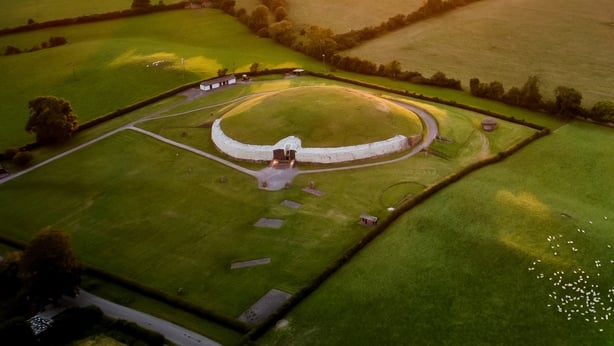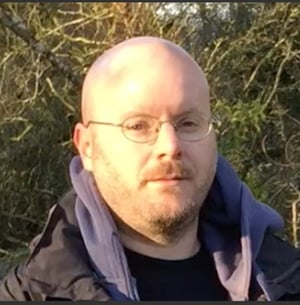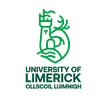Analysis: new technology allows researchers to recreate and study the acoustics of megalithic structures like Newgrange
Believe it or not, Newgrange sounds a lot like my office. How do I know this? Well, I am able to recreate the acoustics of this ancient site (and pretty much any other space) using some recently invented technology.
Using measurements of the tomb made several years ago by researchers from the University of York and downloaded from their Open-Air project, I enter these into our CAVIAR system (Chamber for Augmented, Virtual, and Interactive, Audio Realities) to create a virtual Newgrange. The CAVIAR system, which I helped to develop with colleagues from the Center for Computer Research in Music and Acoustics at Stanford University, lets us listen and study the acoustics of any building at a distance, in controlled conditions.
We need your consent to load this Vimeo contentWe use Vimeo to manage extra content that can set cookies on your device and collect data about your activity. Please review their details and accept them to load the content.Manage Preferences
How a new virtual acoustic system allows users to change and augment the reverberation and resonance of any space
When I tell people about this kind of work, I am asked if it is true that this or that place contains particular resonant frequencies that produce physiological effects on those who experience them. Sometimes these discussions take a detour, with people imagining strange sonic rituals, which often seem based on contemporary sound and musical practices, soundtracks, binaural beats websites, and very dubious YouTube videos.
In fairness, this type of imagination and myth-making is importan and is part of the human condition. But with my scholarly hat on, I have to think about the reality of how these structures might have been used. I find myself asking what we actually know about the music and sound of ancient times. More importantly, what do we hear at these sites now, as this might help us understand what earlier peoples actually heard and experienced, and shed some light on the function — if any — of the acoustics of these structure.
We can infer from the rich mythological traditions of our island that music, poetry and incantations were important to the inhabitants of ancient Ireland. However, the specifics of their use is much more vague. A recent find of wooden pipes brings the archeological evidence for music making in Ireland back to about 2100 BCE — in or around the beginnings of the Bronze Age — and many trumpets dating from this period have been found throughout the country.
We need your consent to load this rte-player contentWe use rte-player to manage extra content that can set cookies on your device and collect data about your activity. Please review their details and accept them to load the content.Manage Preferences
From RTÉ Radio 1's Drivetime in 2020, Philip Boucher-Hayes reports on DNA research conducted on the bones of a man buried at the heart of the 5,000 year old Newgrange tomb
But Newgrange was constructed well before these times. Unlike other sites colleagues and I have worked on, no examples of sound making devices or even instruments like Stone Age bone flutes have been found at Irish neolithic complexes.
There are theories that the passages and chambers of megalithic structures have specific resonances that might support chanting in registers that favour certain voices. Such theories, though, do not take account of many issues. Even relatively slight changes to the angles of supporting stones (due to the weight of a mound) will alter resonant frequencies. Any number of people in the passage or chamber likely reduces the audibility of particular resonances. These theories address the practicalities of performing in such a tight and dark space. In any event, many rooms, corridors and objects that we interact with everyday have these resonances. Should we devise chanting rituals to excite these not-so-sacred objects and spaces?
In the absence of further archeological evidence, we must rely on our ears. In this case, ears have been augmented with a little virtual acoustic technology, to make informed guesses as to the role of the acoustics of these structures.
It is quite an assumption to think that sonic acts were even permitted within Newgrange
What is clear to my ears — and very likely to those who built and used Newgrange — is the total absence of sound from the outside world. No sounds penetrate the tomb: not the weather, animals, or any humans outside the tomb. Those inside the tomb likely hearing the sounds of their own bodies in ways they never typically experienced in daily life, an utterly altered state.
This isolation is an incredible feat of engineering, something that is still difficult to achieve today. Ironically, the virtual Newgrange I am sitting in as I write this is in an office that is nowhere near as acoustically isolated from the real world. I can clearly hear a lawnmower droning on somewhere on campus through my 21st century windows!
Anyway, it is quite an assumption to think that sonic acts were even permitted within Newgrange. Given the diversity of ritual practices at sacred sites around the world, we must remember that while prayer (even incantation) can be exclamatory, it can also be directed internally to the point of total silence. Perhaps the unique acoustic conditions within Newgrange demanded the avoidance of human exclamation or instrumental sound by its users?

For the sake of argument, let's say that voice was used within the tomb. Unlike many other sacred spaces, the source of any sound made within Newgrange (real and virtual) is clear and direct. Rather than chanting or performing in order to resonate a specific frequency in the passage or chamber, perhaps the isolated acoustic of the space offered the opportunity for privacy and a chance to exchange important and precise information without fear of being overheard or misunderstood?
That’s what I am thinking about while sitting in an office that is made to sound like a megalithic tomb. This summer, if you visit the real Newgrange, Knowth, or Dowth, ask yourself: what do your ears suggest to you?
The views expressed here are those of the author and do not represent or reflect the views of RTÉ


